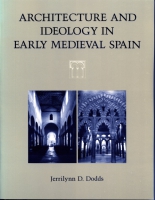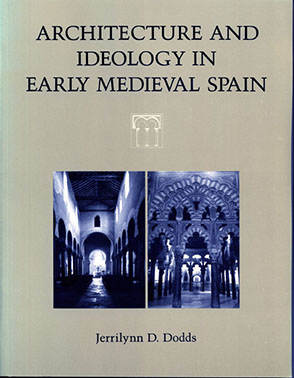Architecture and Ideology in Early Medieval Spain
Jerrilynn D. Dodds
“There is a particular pleasure in learning about times so remote that fact reads like fabulous fiction. Vivified by the impassioned prose of Jerrilynn D. Dodds, this scholarly study moves out of the realm of academic archaeology and into an intriguing overview of a pivotal period in Spanish history.”
- Description
- Reviews
- Bio
- Subjects
Architecture and Ideology in Early Medieval Spain covers the Spanish medieval experience from the Visigothic oligarchy to the year 1000, addressing a variety of cases of cultural interchange. It examines the embattled reactive stance of Hispano-Romans to their Visigothic rulers and the Asturian search for a new language of forms to support a political position dissociated from the struggles of a peninsula caught in the grip of a foreign and infidel rule. Dodds then examines the symbolic meaning of the Mozarabic churches of the tenth century and their reflection of the Mozarabs’ threatened cultural identity.
The final chapter focuses on two cases of artistic interchange between Islamic and Christian builders with a view toward understanding the dynamics of such interchange between conflicting cultures. Dodds concludes with a short account of the beginning of Romanesque architecture in Spain and an analysis of some of the ways in which artistic expression can reveal the subconscious of a culture.
“There is a particular pleasure in learning about times so remote that fact reads like fabulous fiction. Vivified by the impassioned prose of Jerrilynn D. Dodds, this scholarly study moves out of the realm of academic archaeology and into an intriguing overview of a pivotal period in Spanish history.”
“Dodds’s analyses of such churches as San Pedro de la Nave, San Julian de los Prados at Oviedo, and San Miguel de Escalada should make it difficult for art historians to continue to ignore the contribution of Spain in their assessments of European architecture before the year 1000. Further, Dodds’s book may inspire some of those same art historians not only to add new monuments to their canon of research-worthy buildings, but also, more generally to modify the questions they ask of their monuments. The author is unwilling to limit her consideration to the dates of buildings, their typologies and technologies. Each section of [the book] raises issues in addition to those of chronology and form. . . . Dodds’s [volume] is notable for its methodological sophistication as well as its archaeological and descriptive sensitivity. The work marks a significant advance in our knowledge of an understudied area of European architectural history. Just as significantly, this book also provides medieval architectural historians with a possible model for rethinking and rewriting the field.”
“Dodds has made a notable contribution to our understanding of the history of the Peninsula between the sixth century and the tenth. Her sensitive and well-informed reading of the buildings of the period either side of the Arab Conquest of 711 complements the sparse documentary record of the age in which ideologues of various persuasions have either located the beginnings of a distinctive Spanish identity or discovered traces of its survival from the Roman past.”
Jerrilynn D. Dodds is Associate Professor of Architectural History in the School of Architecture at the City College of the City University of New York and editor of Al-Andalus: The Art of Islamic Spain (1992).
Mailing List
Subscribe to our mailing list and be notified about new titles, journals and catalogs.




